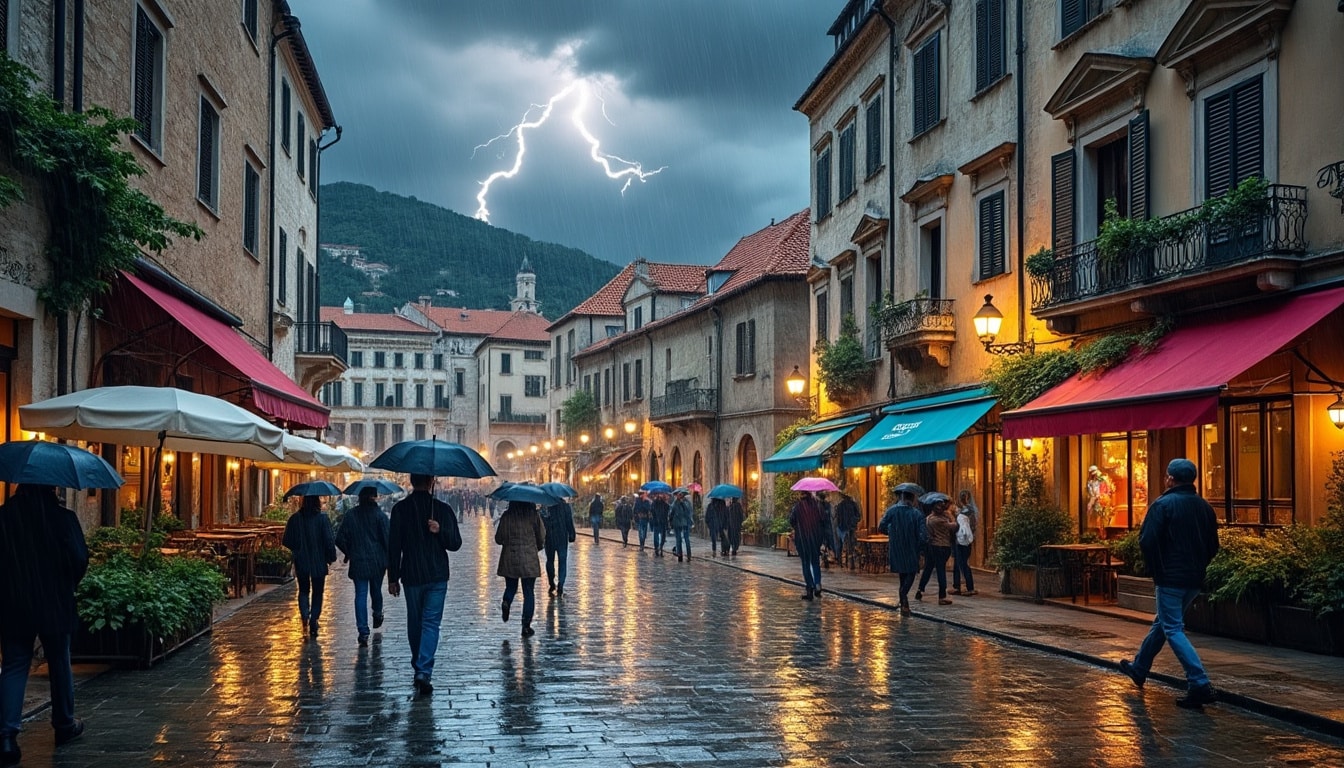Split, the charming city located along the Dalmatian Coast in Croatia, is known for its vibrant culture, historical sites, and scenic beauty. But aside from its cultural significance, the weather patterns, including rain and precipitation, play a vital role in shaping the day-to-day experiences of both residents and visitors. Understanding these patterns can enhance travel plans, influence local agricultural practices, and affect day-to-day activities. With its Mediterranean climate, Split experiences distinct seasonal changes, influencing everything from water activities to cultural events. 🌧️🌞
Rainfall Patterns in Split Throughout the Year
Split’s climate is classified as Mediterranean, characterized by mild, wet winters and hot, dry summers. This is reflected in the precipitation patterns observed throughout the year. Typically, the months between September and May see higher rainfall, with November being the wettest month. The city receives an average of 231 mm (9.1 inches) of rain in November, making it essential for visitors during this time to be prepared for wet weather conditions.
In contrast, July stands out as the driest month, with precipitation averaging just 27 mm (1.1 inches). This dramatic contrast in rainfall between seasons underlines the significance of planning activities and travel itineraries in harmony with weather expectations. Understanding these patterns is essential for tourists intending to explore the vibrant outdoor attractions that Split has to offer.
- 📝 November: Wettest month with 231 mm of rain.
- ☀️ July: Driest month with only 27 mm of rain.
- 🌧️ Rainy season: September through May.
For those residents and travelers who turn to detailed weather predictions, platforms like The Weather Channel and AccuWeather provide insights into day-to-day forecasts. These resources help in managing outdoor events and activities, ensuring that neither sightseeing plans nor local festivities are disrupted by unplanned weather surprises.
Moreover, the contrast in rainfall between seasons also reflects on local flora. The wetter season transforms the surroundings into lush landscapes, providing a perfect backdrop for nature enthusiasts and photographers alike.
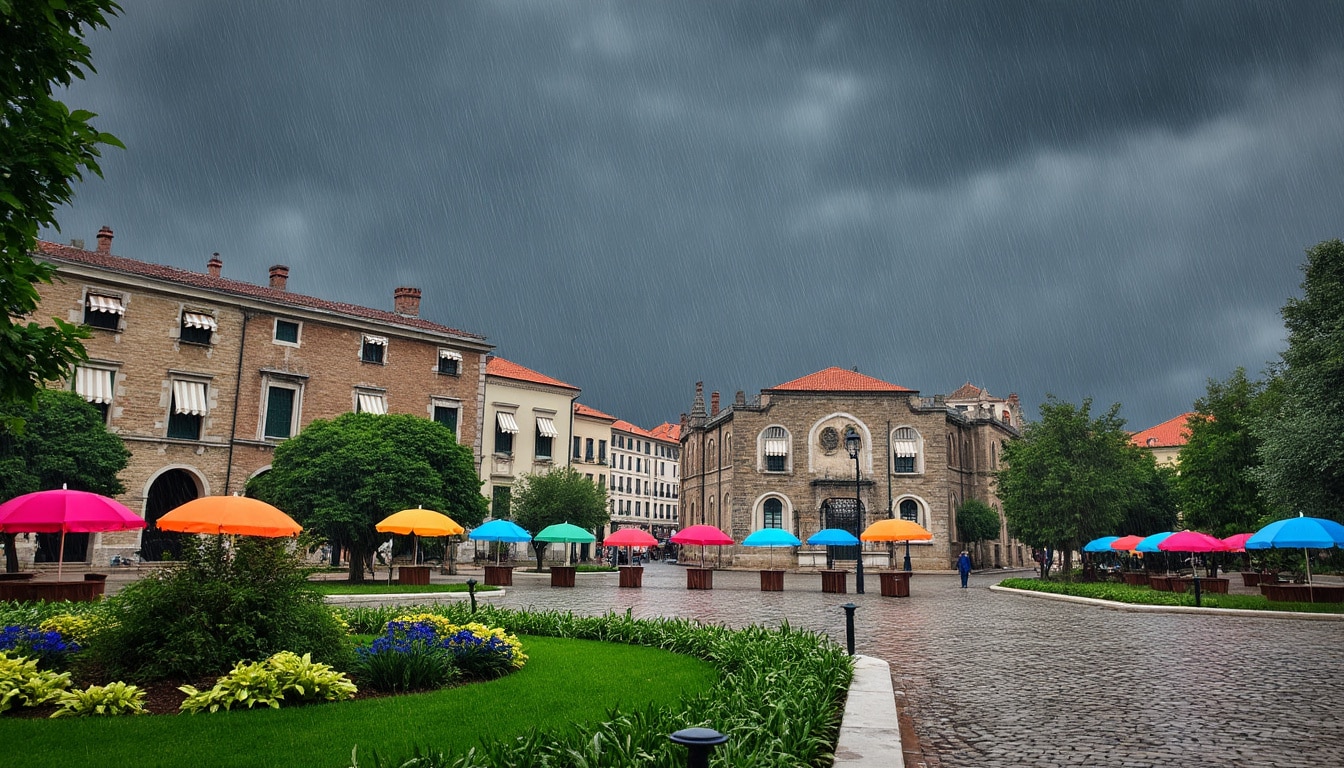
Temperature Variations and Their Impact on Precipitation
The temperature in Split complements its precipitation patterns, fluctuating considerably through the seasons. January reveals the chill of winter, with average temperatures dropping to 4.8 °C (40.6 °F), whereas August embraces the summer’s warmth with averages soaring to around 23.4 °C (74.1 °F).
Temperature Impact on Rainfall
Warmer temperatures, particularly during the summer months, tend to lead to lower precipitation levels. As such, tourists experience more dry days, perfect for enjoying the city’s beaches and historic sites. Conversely, as temperatures drop during the late fall and winter months, rainfall becomes more frequent, marking these months as off-peak tourist seasons.
| Month | Avg. Temperature °C (°F) | Precipitation mm (in) |
|---|---|---|
| January | 4.8 (40.6) | 124 (4.9) |
| August | 23.4 (74.1) | 39 (1.5) |
| November | 10.4 (50.8) | 231 (9.1) |
The autumn months serve as a transitional phase, where temperatures decrease, and the chance of rain increases. This transition is pivotal for activities like local grape harvesting and olive picking, aligning perfectly with cultural festivals celebrating these essential crops.
Utilizing weather platforms such as BBC Weather and MeteoGroup assists residents and travelers in preparing for such seasonal dynamics, ensuring that everyday activities remain uninterrupted. These platforms provide consistent updates and alerts, vital for those planning to enjoy Split’s outdoor activities during peak rainfall months.
Exploring Summer and Winter Contrasts in Split’s Climate
Summers in Split are synonymous with sun-drenched beaches and vibrant cultural festivals. The warm, dry weather serves as a magnet for tourists seeking to bask in the Adriatic’s beauty. Conversely, the cooler winter months present a quieter holiday environment, where the city’s historical attractions are less crowded, and local cafes offer cozy refuges.
Summer Bliss
- ⛱️ Beach activities: Minimal rainfall makes it perfect for sunbathing and water sports.
- 🎶 Cultural festivals: Numerous events coincide with the dry weather.
- 🚶♂️ Outdoor exploration: Hiking trails and parks experience increased visitor turnout.
Summer is indeed a time when many find themselves wandering through historic sites, such as Diocletian’s Palace, without the hindrance of rain. Weather.com and Weather Underground are typically referenced for accurate forecasts, ensuring visitors maximize their time in the city.
Winter Calm
- 🔥 Cosy cafes: A refuge during the colder, rainier days.
- 🏛️ Historical sites: Less crowded, enabling explorative and reflective experiences.
- ❄️ Local cuisine: Enjoy robust dishes that warm both body and spirit.
Winters invite visitors to explore the architectural wonders without the hustle and bustle of summer crowds. Rainy days offer opportunities to dive into deeper cultural experiences, such as cooking classes or workshops in local crafts. Travelers often rely on Dark Sky to anticipate weather changes and ensure their plans remain flexible.
Shifting Seasons and Their Influence on Local Life
The weather in Split is more than just a backdrop; it plays a pivotal role in the rhythm of local life. From agricultural practices to festivity schedules, the patterns of rain and sunshine dictate many aspects of the community’s way of life.
Agricultural Influence
The wet months are crucial for farming practices, providing the necessary moisture for olives, grapes, and other essential crops. This period is often celebrated through harvest festivals, allowing for the community and tourists alike to partake in the joys of nature’s bounty.
- 🌿 Olive harvesting: Takes place during wetter months, resulting in fresher produce.
- 🍇 Wine production: The viticulture industry thrives with the aid of adequate rainfall.
- 🌻 Floral bloom: Gardens burst with life, bringing color to otherwise grey days.
Platforms like Wunderground and Climacell highlight these specific agricultural nuances, providing updates essential for farmers depending on accurate forecasts for planting and harvest timing.
Cultural Festivities
The locals structure many of their festivals around the prevailing weather conditions. Events such as the traditional Christmas markets in winter and the vibrant music festivals in summer are planned with weather expectations in mind, ensuring both comfort and safety for participants and visitors.
For those planning a visit, it’s advisable to explore local guides that highlight seasonal attractions and events, such as those found on Split Holidays and other travel advisory platforms. These resources offer comprehensive insights into making the most of the city’s weather-affected offerings.
Weather Adaptation Tactics for Visitors and Residents
Weather adaptation in Split involves more than just umbrellas and sunscreen; it’s about engaging with the community and understanding the nuances of seasonal changes.
For Visitors
- 📅 Plan ahead: Use reliable weather apps and websites like NOAA and Weather.com
- 🎒 Pack smart: Include weather essentials like jackets or swim gear depending on the season.
- 📝 Flexible itineraries: Allow for spontaneity in plans to accommodate unexpected changes.
Visiting websites like Split Holidays offers practical advice on weather expectations, ensuring travelers prepare adequately for both rainy and sunny spells.
For Residents
- 🌱 Gardening: Adjust planting schedules based on rainfall forecasts.
- 🚗 Transport considerations: Plan commutes around expected heavy rain days.
- 🏠 Home preparations: Ensure roofs and drainage systems are well-maintained.
Community awareness programs often highlight seasonal changes, encouraging locals to contribute to weather preparedness activities. Engagement with these initiatives not only ensures safety but also bolsters community spirit.
Weather as a Community Connector
In Split, the weather acts as a bonding factor, with shared experiences around seasonal changes leading to stronger community ties. Through engaging with nature, whether it’s celebrating a bountiful harvest or sheltering from a storm, the weather in Split brings people together, enriching their lives with shared stories and experiences.
Frequently Asked Questions (FAQ) about Split’s Weather
Q1: What is the best time to visit Split for sunny weather?
A1: The best time to visit Split for sunny weather is during the summer months of June to August, when precipitation is at its lowest.
Q2: How does Split’s winter weather affect travel?
A2: Although wet, winter in Split sees milder temperatures compared to other European destinations, making it ideal for indoor and cultural activities.
Q3: Are weather forecasts for Split reliable?
A3: Yes, utilizing reliable platforms such as NOAA, AccuWeather, and Weather.com can provide accurate forecasts.
Understanding the intricate climate and weather patterns in Split can truly enhance one’s experience, whether visiting or residing in the city. It’s about appreciating the symphony of sun and rain that shapes the enchanting days and nights of this historic coastal town.
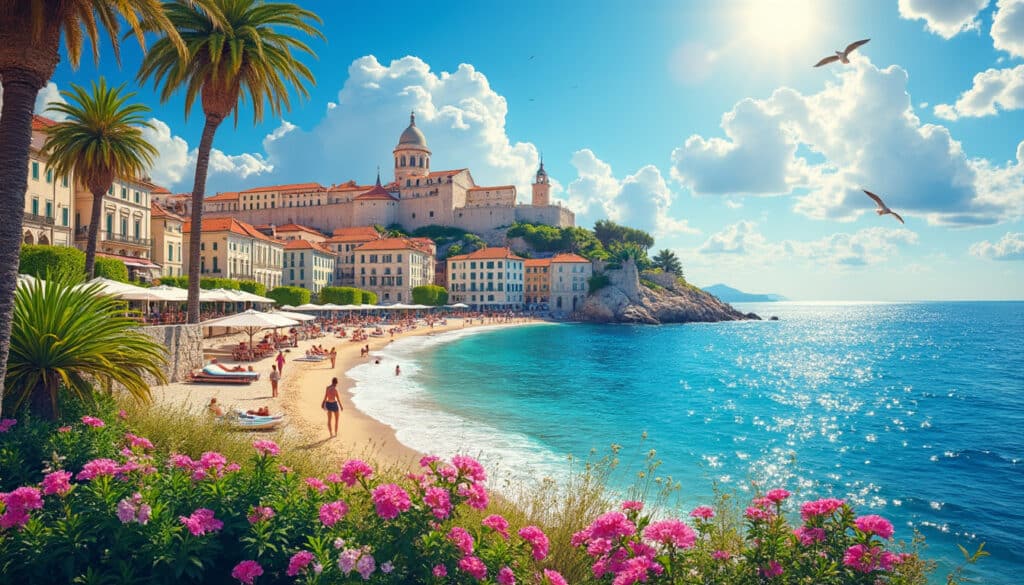
Embracing the picturesque views of the Dalmatian Coast, Split is not only a haven for history enthusiasts but also an intriguing destination due to its unique Mediterranean climate. This city perfectly combines cultural richness with weather nuances, offering a spectrum…
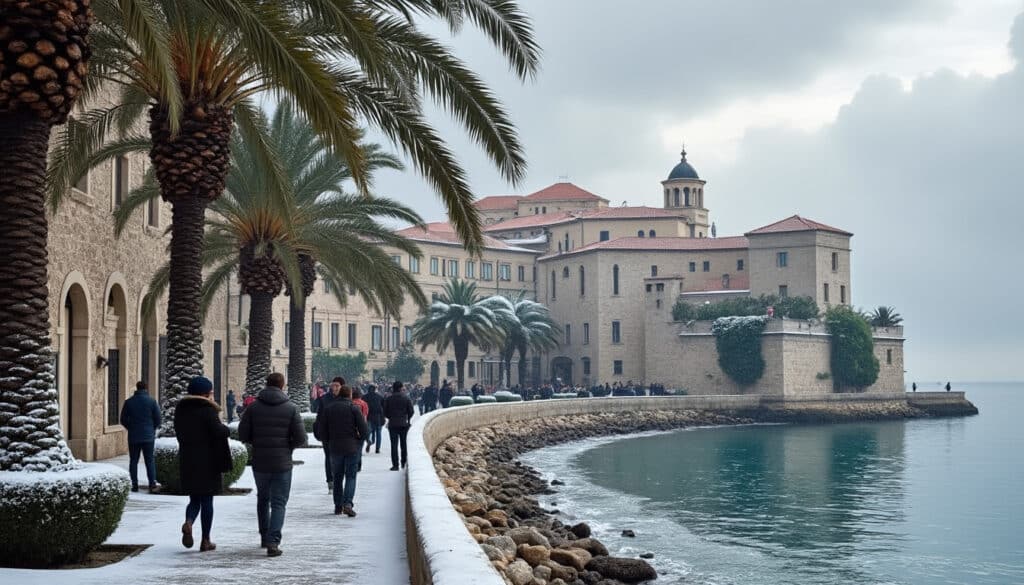
While Split, Croatia is widely celebrated for its radiant summers with tourists flocking to its historic sites and fetching beaches, the cold weather presents a different yet equally captivating charm. As a local guide with a keen interest in history,…
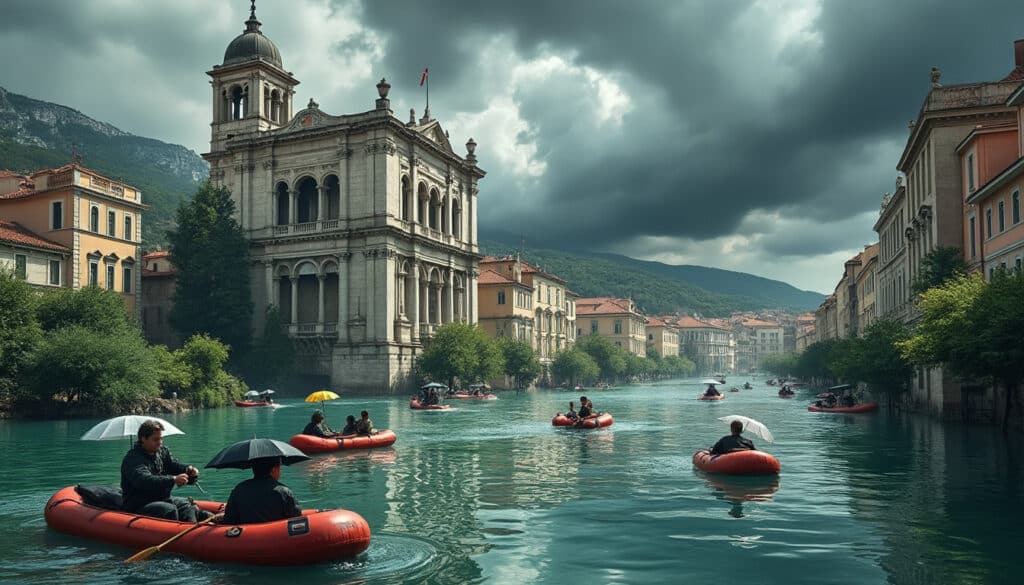
Flooding and natural risks in Split
The picturesque city of Split, renowned for its stunning architecture and rich history, faces a delicate challenge that requires immediate attention: the management of natural risks. As a city cradled along the Adriatic coast, Split enjoys the beauty of the…
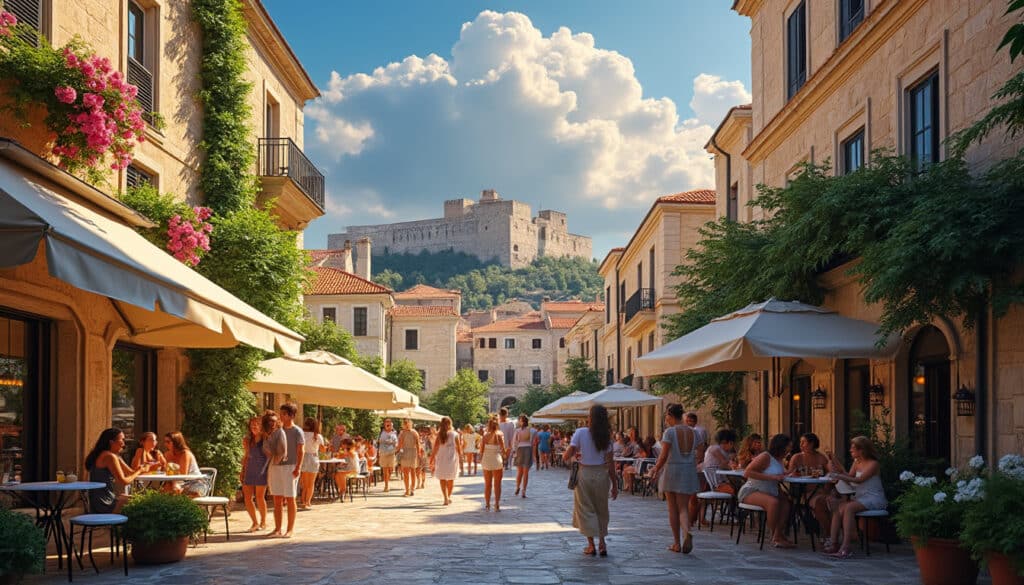
Split, Croatia is a city known for its stunning coastal views, rich history, and vibrant culture. Situated on the eastern shore of the Adriatic Sea, this picturesque location is not only famous for its architectural wonders and buzzing seafront but…

Is Split warm throughout the year?
Situated along the picturesque Adriatic coastline, Split, Croatia, is often heralded for its warm climate that seems to envelop the city with a perennial embrace. Let’s dive deep into understanding whether Split is indeed warm throughout the year and what…

Nestled along the azure Adriatic Coast, Split offers a distinct charm that varies with each season. Whether you’re drawn to the sun-drenched beaches in the height of summer or the tranquil ambiance of its less crowded months, Split promises an…
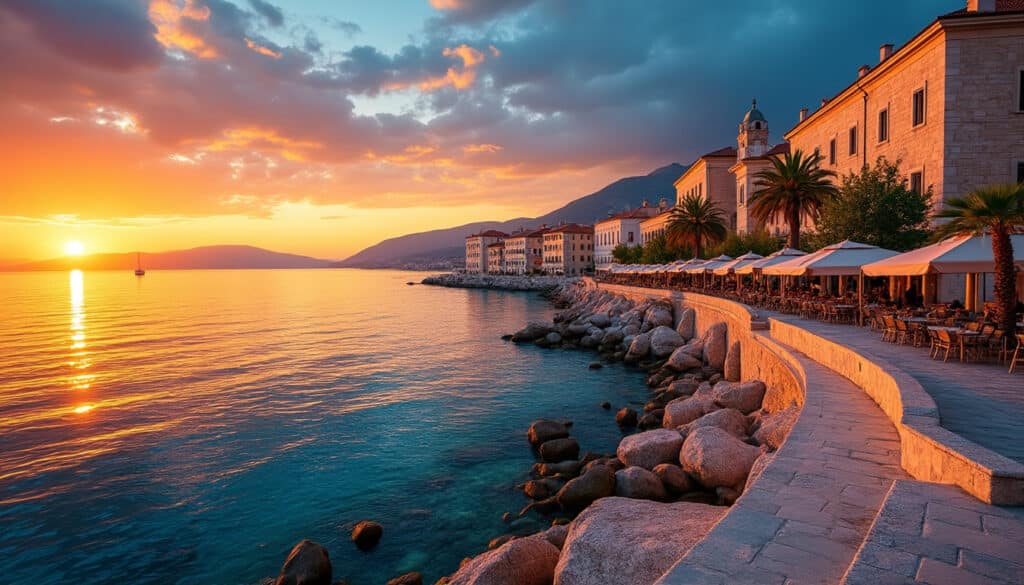
Split, a picturesque city along the Croatian Adriatic coast, is renowned not only for its stunning ancient architecture and vibrant culture but also for its breathtaking sunrises. The strategic location of Split, nestled between the blue of the sea and…
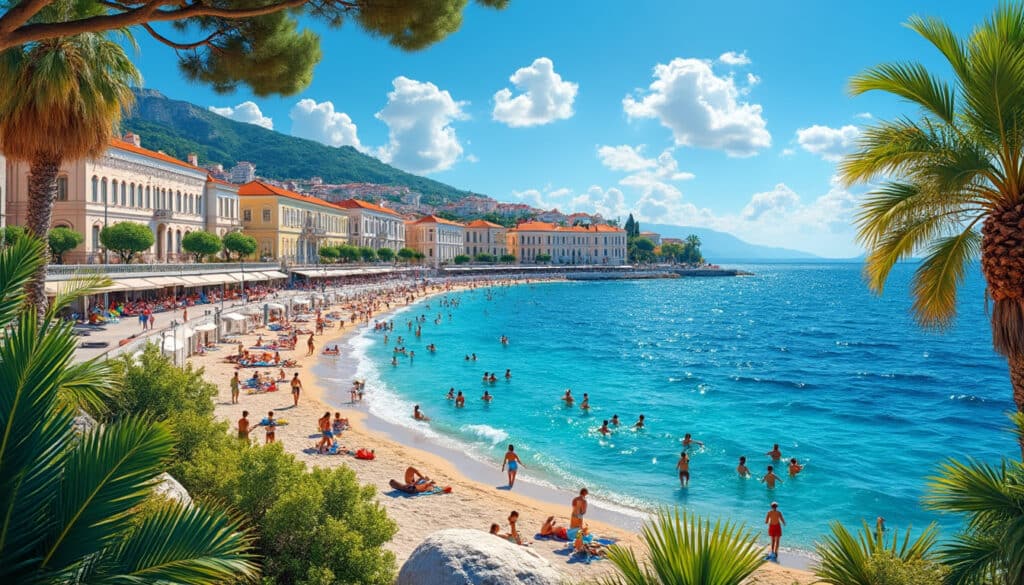
What is the weather like in Split?
Split, one of Croatia’s most vibrant coastal cities, is renowned not only for its rich cultural heritage and stunning landscapes but also for its unique climate. Travelers and residents often find themselves captivated by the mild and pleasant weather that…
Split, a picturesque city perched on the Dalmatian Coast of Croatia, is renowned for its stunning blend of ancient history and vibrant modern life. For both locals and tourists, understanding the nuances of its weather is crucial in ensuring a…
In Split, a city that gracefully hugs the Dalmatian coast, the heat of summer is not just a season but a vibrant experience. The panoramic views of the Adriatic, coupled with historic charm, render Split a captivating location. Summers are…

